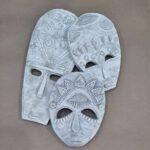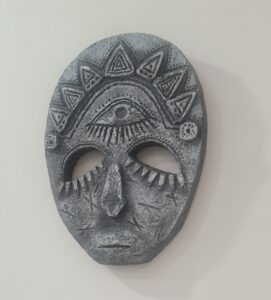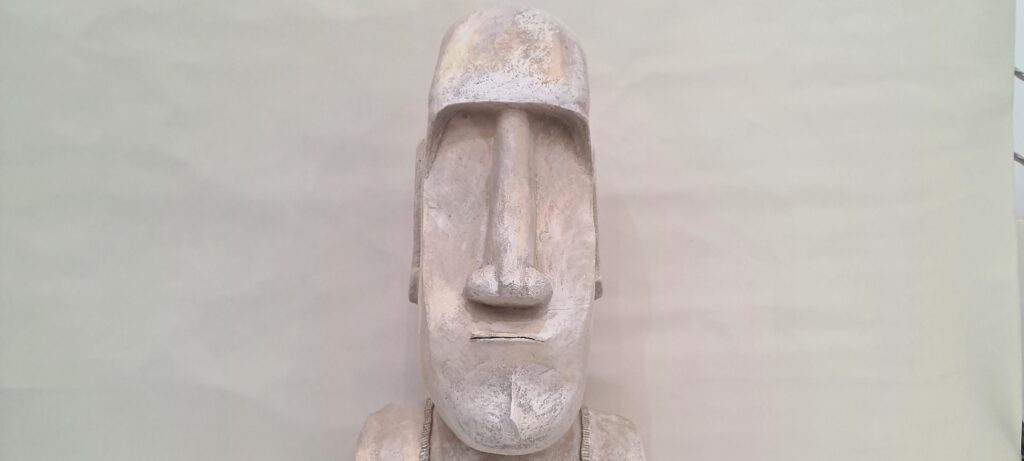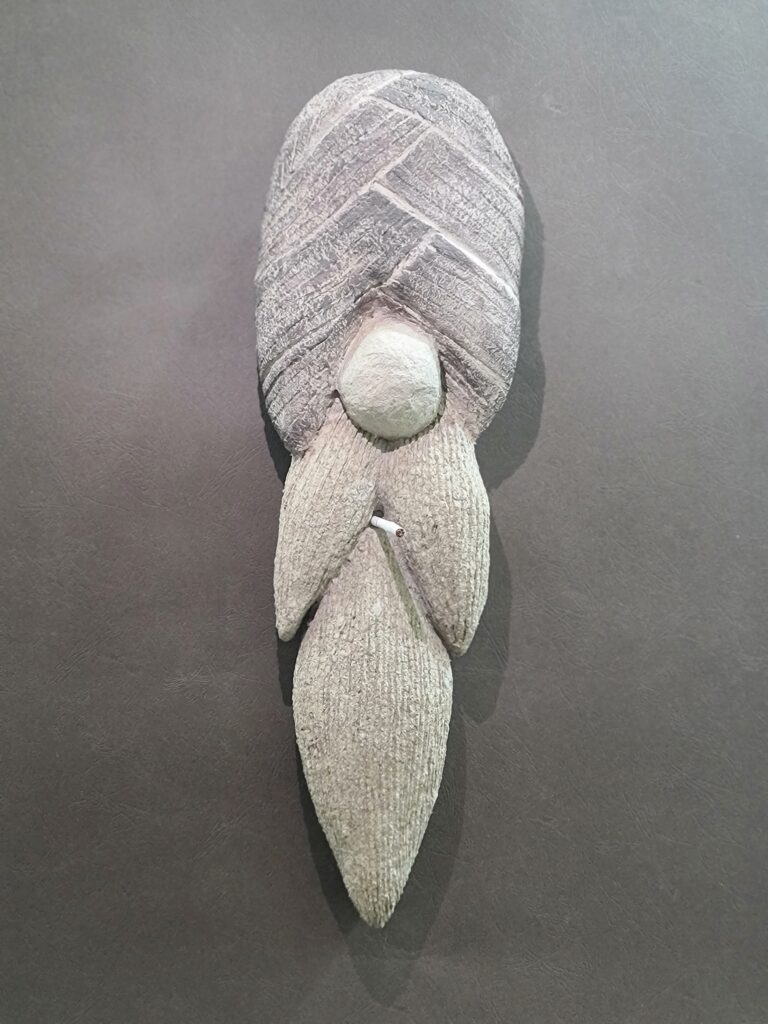
History of papier mache
Imperial China
The Chinese during the Han dynasty appeared to be the first to use papier-mâché around 200 CE, not long after they learned how to make paper. They employed the technique to make items such as warrior helmets, mirror cases, or ceremonial masks.
Ancient Egypt
In ancient Egypt, coffins and death masks were often made from cartonnage—layers of papyrus or linen covered with plaster.
Middle and Far East
In Persia, papier-mâché has been used to manufacture small painted boxes, trays, étagères and cases. Japan and China also produced laminated paper articles using papier-mâché. In Japan and India, papier-mâché was used to add decorative elements to armor and shields.
Kashmir
The papier-mâché technique was first adopted in Kashmir in the 14th century by Mir Sayyid Ali Hamadani, a Sufi mystic, who came to Kashmir during the late 14th century along with his followers, many of whom were craftsmen. These craftsmen used hand-made paper pulp from Iran.
Kashmir papier-mâché has been used to manufacture boxes (small and big), bowls, trays, étagères, useful and decorative items, models, birds and animals, vases, lights, corporate gifts and lot more. It remains highly marketed in India and Pakistan and is a part of the luxury ornamental handicraft market. The product is protected under the Geographic Indication Act 1999 of Indian government, and was registered by the Controller General of Patents Designs and Trademarks during the period from April 2011 to March 2012 under the title “Kashmir Paper Machie”.
Europe
Starting around 1725 in Europe, gilded papier-mâché began to appear as a low-cost alternative to similarly treated plaster or carved wood in architecture. Henry Clay of Birmingham, England, patented a process for treating laminated sheets of paper with linseed oil to produce waterproof panels in 1772. These sheets were used for building coach-door panels as well as for other structural uses. Theodore Jennens patented a process in 1847 for steaming and pressing these laminated sheets into various shapes, which were then used to manufacture trays, chair backs, and structural panels, usually laid over a wood or metal armature for strength. The papier-mâché was smoothed and lacquered, or given a pearl-shell finish. The industry lasted through the 19th century.Russia had a thriving industry in ornamental papier-mâché. A large assortment of painted Russian papier-mâché items appears in a Tiffany & Co. catalog from 1893.Martin Travers, the English ecclesiastical designer, made much use of papier-mâché for his church furnishings in the 1930s.
Papier-mâché has been used for doll heads, starting as early as 1540, molded in two parts from a mixture of paper pulp, clay, and plaster, and then glued together, with the head then smoothed, painted and varnished.
Carton-pierre consists of papier-mâché imitating wood, stone or bronze, especially in architecture.
Mexico

Cartonería or papier-mâché sculpture is a traditional handcraft in Mexico. The papier-mâché works are also called “carton Piedra” (rock cardboard) for the rigidness of the final product.These sculptures today are generally made for certain yearly celebrations, especially for the Burning of Judas during Holy Week and various decorative items for Day of the Dead. However, they also include piñatas, mojigangas, masks, dolls and more made for various other occasions. There is also a significant market for collectors as well. Papier-mâché was introduced into Mexico during the colonial period, originally to make items for church. Since then, the craft has developed, especially in central Mexico. In the 20th century, the creation of works by Mexico City artisans Pedro Linares and Carmen Caballo Sevilla were recognized as works of art with patrons such as Diego Rivera. The craft has become less popular with more recent generations, but various government and cultural institutions work to preserve it.
Paper boats
One common item made in the 19th century in America was the paper canoe, most famously made by Waters & Sons of Troy, New York. The invention of the continuous sheet paper machine allows paper sheets to be made of any length, and this made an ideal material for building a seamless boat hull. The paper of the time was significantly stretchier than modern paper, especially when damp, and this was used to good effect in the manufacture of paper boats. A layer of thick, dampened paper was placed over a hull mold and tacked down at the edges. A layer of glue was added, allowed to dry, and sanded down. Additional layers of paper and glue could be added to achieve the desired thickness, and cloth could be added as well to provide additional strength and stiffness. The final product was trimmed, reinforced with wooden strips at the keel and gunwales to provide stiffness, and waterproofed. Paper racing shells were highly competitive during the late 19th century. Few examples of paper boats survived. One of the best known paper boats was the canoe, the “Maria Theresa”, used by Nathaniel Holmes Bishop to travel from New York to Florida in 1874–75. An account of his travels was published in the book Voyage of the Paper Canoe.
Paper observatory domes
Papier-mâché panels were used in the late 19th century and early 20th century to produce lightweight domes, used primarily for observatories. The domes were constructed over a wooden or iron framework, and the first ones were made by the same manufacturer that made the early paper boats, Waters & Sons. The domes used in observatories had to be light in weight so that they could easily be rotated to position the telescope opening in any direction, and large enough so that it could cover the large refractor telescopes in use at the time.
Applications
With modern plastics and composites taking over the decorative and structural roles that papier-mâché played in the past, papier-mâché has become less of a commercial product. There are exceptions, such as Micarta, a modern paper composite, and traditional applications such as the piñata. It is still used in cases where the ease of construction and low cost are important, such as in arts and crafts.
Carnival floats

Papier-mâché is commonly used for large, temporary sculptures such as Carnival floats. A basic structure of wood, metal and metal wire mesh, such as poultry netting, is covered in papier-mâché. Once dried, details are added. The papier-mâché is then sanded and painted. Carnival floats can be very large and comprise a number of characters, props and scenic elements, all organized around a chosen theme. They can also accommodate several dozen people, including the operators of the mechanisms. The floats can have movable parts, like the facial features of a character, or its limbs. It is not unusual for local professional architects, engineers, painters, sculptors and ceramists to take part in the design and construction of the floats. New Orleans Mardi Gras float maker Blaine Kern, operator of the Mardi Gras World float museum, brings Carnival float artists from Italy to work on his floats.
Costuming and the theatre
Creating papier-mâché masks is common among elementary school children and craft lovers. Either one’s own face or a balloon can be used as a mold. This is common during Halloween time as a facial mask complements the costume.
Papier-mâché is an economical building material for both sets and costume elements. It is also employed in puppetry. A famous company that popularized it is Bread and Puppet Theater founded by Peter Schumann.
Our Projects

How to make paper mache
Paper machePapier-mâché, or what's more commonly searched for as paper mache, is the perfect crafting activity for children and the whole family to get involved ...

History of papier mache
Imperial ChinaThe Chinese during the Han dynasty appeared to be the first to use papier-mâché around 200 CE, not long after they learned how to make ...

papier mache
Papier-mâchépaper mache, is a composite material consisting of paper pieces or pulp, sometimes reinforced with textiles, and bound with an adhesive, such as glue, starch, or wallpaper paste.Papier-mâché sculptures are ...
Contact us
Phone number :
(+98) 939-802-9884
Address :
IRAN-TEHRAN
E-mail :
mahtabartmoon@gmail.com